|
The
Australian and New Zealand Masonic Research Council (ANZMRC) is a voluntary
association of research lodges from the seven local Masonic jurisdictions, which
enables these lodges to cooperate in many ways to their mutual advantage. It
crosses jurisdictional boundaries without interfering with the authority of the
various Grand Lodges, and has begun to bring Australian and New Zealand research
to the attention of the rest of the Masonic world.
This paper provides a brief history of ANZMRC and an outline of its
achievements.
Background
Australia is an island continent, approximately the size of the 48
contiguous states of the United States of America, but with a much smaller
population, most of which is located on the eastern, southern, and south-western
coastlines, and the island of Tasmania. Politically, it comprises six states
(Queensland, New South Wales, Victoria, South Australia, Western Australia, and
Tasmania) and two mainland territories (the
Northern Territory and the Australian Capital Territory), all of which have a
measure of self-government under the federal Commonwealth of Australia, plus
several offshore territories under direct federal rule. New Zealand is located
southeast of Australia, comprises two main islands, and is a separate political
entity. Both countries are part of the voluntary association known as the
British Commonwealth of Nations—as, indeed, is Canada.
The regiments of the British army brought Freemasonry to Australia, as
they had previously to the British colonies in North America, and thus Irish,
English and Scottish lodges were established in each of the Australian colonies,
and spread to the colony of New Zealand. Eventually, local Grand Lodges were
established, one per colony. Such establishment was not always achieved
harmoniously—where the word ‘united’ forms part of the title, it indicates
a prior period of dis-unity—and some compromises were necessary.
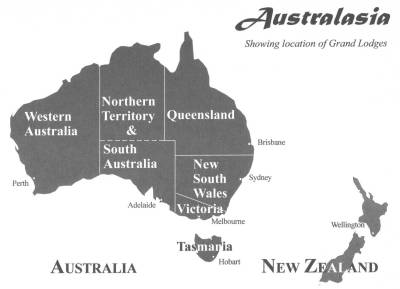 The United Grand Lodge of Queensland (1921) has a number of lodges which
are permitted to retain their Scottish ritual and regalia in return for their
affiliation to the local Grand Lodge. This Grand Lodge also has lodges in the
independent country of Papua New Guinea, north of Australia, and there are two
lodges under the United Grand Lodge of England in rural Queensland (plus one
English lodge in Papua New Guinea).
The United Grand Lodge of Queensland (1921) has a number of lodges which
are permitted to retain their Scottish ritual and regalia in return for their
affiliation to the local Grand Lodge. This Grand Lodge also has lodges in the
independent country of Papua New Guinea, north of Australia, and there are two
lodges under the United Grand Lodge of England in rural Queensland (plus one
English lodge in Papua New Guinea).
Two whole Districts of lodges under the Grand Lodge of Scotland, and one
solitary English lodge, survive in the territory of the Grand Lodge of Western
Australia (1900), and one English lodge is still at work within the territory of
the United Grand Lodge of Victoria (1889).
The Grand Lodge of South Australia and the Northern Territory (1884)
permits several of its own lodges to work foreign rituals (German, Italian,
English and Scottish) in various languages, and has one lodge under the Grand
Lodge of Ireland in its territory. The United Grand Lodge of New South Wales and
the Australian Capital Territory (1888), and the Grand Lodge of Tasmania (1890)
have no recognized foreign lodges.
The Grand Lodge of New Zealand (1890) shares territory amicably with a
large number of English lodges (two Districts), Scottish (two Districts) and
Irish (one Province). New Zealand also has lodges in Western Samoa and American
Samoa.[1]
Each Grand Lodge permits—and some actually encourage—Masonic
research. This takes various forms. New Zealand has ten chartered research
lodges, and only Past Masters may become full members; Western Australia has
only one chartered research lodge, which has a research monopoly for the whole
jurisdiction. Geographically huge South Australia & Northern Territory, and
tiny Tasmania each have two chartered research lodges, one in the north and one
in the south. New South Wales & Australian Capital Territory, and Queensland
each have one chartered lodge of research, one or more ‘lodges of
instruction’ which turn their attention to research, and informal study
groups. Recently New South Wales has also chartered other lodges which have a
research interest and strong Internet links. Victoria has two lodges of research
and at least two informal groups.[2]
The earliest Australian research lodges were established between 1889 and
1921, and there was a surge of renewed interest some years after World War II,
but there was very little inter-jurisdictional contact between these lodges.
Most research lodges published their papers only in pamphlet form, or on loose
sheets, and some did not publish at all. Circulation was generally limited to
their own members, and sporadically copies were supplied to other research
lodges. There was little personal contact outside the jurisdiction, and
virtually none beyond the shores of Australia. But in 1990 this was about to
change.
The Grand Design
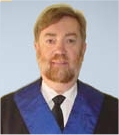 The architect of change was Kent William Henderson, of Victoria, known at
least by name to most Australian researchers by virtue of his books, ‘Masonic
World Guide’ (Lewis Masonic, London 1984, distributed in USA by Macoy), and
‘The Masonic Grand Masters of Australia’ (Drakeford, Melbourne 1988). The
catalyst was a paper on the history of Masonic research in Australia and New
Zealand, by a hitherto unknown South Australian researcher.[3]
The architect of change was Kent William Henderson, of Victoria, known at
least by name to most Australian researchers by virtue of his books, ‘Masonic
World Guide’ (Lewis Masonic, London 1984, distributed in USA by Macoy), and
‘The Masonic Grand Masters of Australia’ (Drakeford, Melbourne 1988). The
catalyst was a paper on the history of Masonic research in Australia and New
Zealand, by a hitherto unknown South Australian researcher.[3]
Both were about to become Master of their respective lodges of research
and, on Henderson’s initiative, each presented a paper in the other’s lodge.
Henderson contacted researchers in other jurisdictions and outlined his ideas
for a joint venture to form an Australian Masonic Research Council. His contacts
obtained agreement in principle from their respective research lodges, and
formed an interim committee: one member from each of the six Australian
jurisdictions, with Henderson as interim secretary. In typical Henderson
fashion, he immediately presented the committee with a draft constitution and
set of aims for the proposed Council, and eventually secured their agreement.
The aims of the Council, as subsequently ratified by the lodges, were:
* To promote Masonic research & education on an inter-jurisdictional
basis;
* To provide liaison between research lodges;
* To organize conferences;
* To organize and coordinate lecture tours by international
Masonic scholars; and
* To publish the tour lectures, conference proceedings and other books.
It was agreed well in advance that the inaugural meeting would be held in
Melbourne, Victoria, in mid-June 1992, under the auspices of the Victorian Lodge
of Research. But other events were already in hand—Henderson’s hand.
Jumping the gun
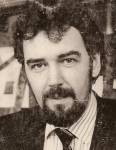
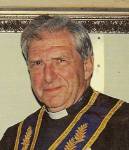 In 1990, while the interim committee was still in the process of being
formed, Kent Henderson, as future Master of the Victorian Lodge of Research,
arranged for well-known English researcher John Hamill to visit Australia and
address the Victorian Lodge of Research. Henderson then offered Hamill to the
other research lodges, upon payment of a share of the costs. The offer was
eagerly accepted, and the Hamill lecture tour was scheduled for June 1991.
In 1990, while the interim committee was still in the process of being
formed, Kent Henderson, as future Master of the Victorian Lodge of Research,
arranged for well-known English researcher John Hamill to visit Australia and
address the Victorian Lodge of Research. Henderson then offered Hamill to the
other research lodges, upon payment of a share of the costs. The offer was
eagerly accepted, and the Hamill lecture tour was scheduled for June 1991.
However, shortly before Henderson was to be installed as Master of the
lodge, he learned that another famous English researcher, the Revd Neville
Barker Cryer, was planning to visit relatives in Australia, en route to New
Zealand for the centenary celebrations of the Grand Lodge of New Zealand.
Henderson quickly arranged an imprompu lecture tour for Cryer, before the Hamill
tour. He also arranged for a book of Hamill’s lectures to be published after
his tour, the cost being underwritten by the Victorian Lodge of Research. Time
was too short for him to arrange for a book of Cryer’s lectures.
Thus, the sequence of events was:
* September 1990, Kent Henderson installed as Master of the Victorian
Lodge of Research;
* October 1990, a short but successful tour of some Australian lodges by
Cryer;
* June 1991, a full and extremely successful tour of Australian lodges by
Hamill;
* Early 1992, publication of John Hamill’s book, ‘Masonic
Perspectives’; and
* June 1992, inauguration of the Australian Masonic Research Council.
The Australian Council
The first Conference of Australian research lodges, at which the
Australian Masonic Research Council was inaugurated, was a three-day affair,
which set the pattern for future conferences. The lodges had been requested to
supply a speaker (one per jurisdiction) to present a research paper worthy of
the occasion. Each paper was allotted 90 minutes for presentation and
discussion. The first of these was presented on the Friday evening, in a tyled
lodge, and was followed by a full Festive Board (a formal dinner, with a toast
list).
The other papers were presented over the weekend in a less formal setting
and were followed by the general meeting which constituted the Council. The
meeting adopted the proposed Constitution, and determined to:
* Hold a conference every 2 years;
* Rotate the meeting place between states;
* Sponsor lecture tours by international scholars every 2 years, between
conference years; and
* Publish ‘Proceedings’ of Conferences, and books of the tour
lectures.
Two categories of membership were established: Affiliate (full)
membership would be open to all Australian (Craft) research lodges and less
formally organized research groups, and each affiliated body would have an equal
vote; Associate (non-voting) membership would be open to other lodges and bodies
associated with Freemasonry, in Australia or overseas, which met with the
approval of the Council. The affiliate members of a particular jurisdiction
nominated a Council representative from their jurisdiction to a (standing)
executive committee, with authority to consult and power to act on behalf of the
Council between the biennial meetings. The officers of the Council were elected
from this committee at the general meeting. The Victorian representative, Kent
Henderson, was elected Secretary of the Council, an office he has continued to
hold to the present date.
The Council decided to retain the format of the research papers presented
at the inaugural conference, and to name them Kellerman Lectures, in
honor of Harry Kellerman, OBE, Past Deputy Grand Master of New South Wales and
the Australian Capital Territory.
Kellerman Lectures
Maurice Herman (Harry) Kellerman (1902–2000) was a teacher for all of
his adult life: in the public school classroom, by correspondence, by radio, in
the Jewish community, and in Freemasonry. He was a founder of the Research Lodge
of New South Wales (1968) and its editor for over 30 years. He was appointed
Grand Librarian in 1982, and compiled a significant section of his Grand
Lodge’s history. Among Masonic researchers he encouraged reference to primary
sources and precise citation, and vigorously discouraged slipshod presentation.
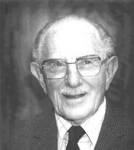 Kellerman gave an exemplary paper at the 1992 conference, at the age of
90, and attended two subsequent conferences, in Sydney, New South Wales (1994)
and Perth, Western Australia (1996), but was not well enough to travel to
Tasmania in 1998, and, sadly, he took his final degree in his 98th year, just a
few months before the fifth biennial conference held in Brisbane, Queensland
(2000).
Kellerman gave an exemplary paper at the 1992 conference, at the age of
90, and attended two subsequent conferences, in Sydney, New South Wales (1994)
and Perth, Western Australia (1996), but was not well enough to travel to
Tasmania in 1998, and, sadly, he took his final degree in his 98th year, just a
few months before the fifth biennial conference held in Brisbane, Queensland
(2000).
The theory behind the form and requirements of a Kellerman Lecture is an
analogy with formal schooling: if a Craft lodge may be considered primary
schooling, then a research lodge ought to be at the secondary level, and the
Council’s conferences should provide the setting for tertiary (University)
level. To this end, a Kellerman Lecture is required to contain the author’s
original work, previously unpublished, and be of interest beyond the boundary of
his own Masonic jurisdiction. The author must present his paper in person, and
be prepared to defend his thesis. It is up to the author to decide how much of
the allotted 90 minutes should be devoted to presentation, and how much is left
for questions and discussion. The author may include as much additional material
as he wishes in the printed version of his paper, and then speak to
the paper rather than read it all. The papers are published in the Conference Proceedings, which are given to registrants at the beginning of
the three-day conference, allowing them some time to assess what is to be
presented. Clearly, it is better to allot a non-controversial paper for the
first session, although organizers seldom seem to take this into account.
Some papers fall short of the standard hoped for, but many fulfil the
aims of the founders, and some are of world standard of excellence.[4] It is up
to the affiliates of a particular jurisdiction to determine selection criteria
for their candidates’ papers. When all offerings fall short of these criteria,
the choice is between lowering the standard or declining to offer a Kellerman
Lecture on that occasion. To date, there have been only two occasions when the
Council itself was obliged to reject the jurisdiction’s offering.
Similarly, if there is a shortage of suitable lecturers in a
jurisdiction, the choice lies between recycling a Past Kellerman Lecturer and
not filling the vacancy. Recycling, I would suggest, is contrary to the original
design, which was to provide an opportunity for as many researchers as possible
to experience the presentation of a paper for judgment by their peers in other
jurisdictions; in other words, to give the small frog a bigger pond in which to
grow. Now, when such a vacancy occurs, the committee has authority to offer it
to another jurisdiction, to fill the conference program.
Generally, the Grand Lodges from which the Council draws its affiliate
membership have been supportive of the Council’s aims and activities,
recognizing that these activities aid research and education within the
jurisdictions and that the Council’s growing reputation overseas reflects
favorably on the Grand Lodges concerned. However, the Grand Lodges reacted
adversely to the manner in which the Council proposed to recognize the status of
Kellerman Lecturers. The Council wished to award a special collarette jewel to
Kellerman Lecturers; the enameled jewel, containing the Council’s logo and the
words Kellerman Lecturer on the front, with the name of the recipient and date
of award on the back, would be worn around the neck on a pale blue ribbon on all
Masonic occasions. This would be similar to the collarette jewels worn by
Prestonian Lecturers in the Craft and Batham Lecturers in the Royal Arch in
England. The Grand Lodges refused to permit this, insisting that it was the
prerogative of Grand Lodge to award collarette jewels. The Council was obliged
to accept that ruling and decided, instead, to create a pocket jewel, only to
discover that regulations in some jurisdictions forbid the wearing of other than
prescribed pocket jewels. So the Council was obliged simply to issue a
certificate and a badge to the Kellerman Lecturers, the badge to be worn where
and when permitted by the recipient’s Grand Lodge. In at least one
jurisdiction even the badge may not be worn on a tyled Masonic occasion. The
badge, in the design of the proposed jewel, is individually created for each
recipient by committee member and current Treasurer Andy Walker.
Expanding membership
The Council began with eleven affiliates: four in Queensland, two each in
Victoria and Tasmania, and one from each of the other states. Shortly
afterwards, two more research bodies under the jurisdiction of the United Grand
Lodge of New South Wales joined as affiliates, and the Council welcomed its
first associate members, a Rose Croix (Scottish Rite) Chapter in Victoria, and
an English lodge of research in Johannesburg, South Africa. Favorable publicity
was generated by the biennial conference in Sydney in 1994, and the lecture
tours of Cyril Batham in 1993 and Neville Barker Cryer (back again, this time
officially) in 1995. Another associate was added, a Royal Arch research chapter
from Victoria, and interest was expressed by several of the research lodges in
New Zealand.
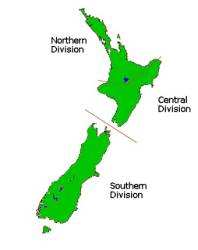 At the 1996 conference, held in Perth, Western Australia, the
Constitution was changed to permit New Zealand research lodges to join as full
members (affiliates) and consequently to change the name to the Australian &
New Zealand Masonic Research Council. The result was four new affiliates and one
associate member—50% of the research lodges in New Zealand.
At the 1996 conference, held in Perth, Western Australia, the
Constitution was changed to permit New Zealand research lodges to join as full
members (affiliates) and consequently to change the name to the Australian &
New Zealand Masonic Research Council. The result was four new affiliates and one
associate member—50% of the research lodges in New Zealand.
At the conference, the Council voted unanimously to admit a Prince Hall
research group, the Phylaxis Society, to associate membership and then, at the
request of the newest associate, presented a Phylaxis Society award to an
Australian researcher. The conference also decided to produce a quarterly
newsletter, which commenced in January 1997.[5]
Over the next ten years, research groups worldwide joined as associates.
They now include: a Masonic Study circle in Mumbai, India; the prestigious Lodge
of Research CC in Dublin, Ireland; an Irish Masters lodge in Jamaica, West
Indies; a Lodge of Instruction in Nairobi, Kenya; an English research lodge in
Johannesburg, South Africa (the first overseas associate); a Scottish research
lodge in Singapore; the Alpina Research Group in Switzerland; and the Phylaxis
Society in the USA; as well as one New Zealand research lodge and two lodges and
a study circle in New South Wales. Several factors combined to attract the
overseas associates, including: encounters with much traveled committee members
Webmaster Richard Num, Secretary Kent Henderson, and long-term President Murray
Yaxley; the surprisingly widespread circulation of the quarterly newsletter, ‘Harashim’;
and publicity arising from the lecture tours and the associated books.
There are now 22 affiliate (full) members: nine from New Zealand, four
from Queensland, one from Western Australia, and two each from the other
Australian jurisdictions. The 100% membership of New Zealand research lodges is
largely due to the recruiting efforts of Assistant Secretary Colin Heyward and
the interest generated by the seventh biennial conference, which was held in
2004 in New Zealand. At the 2006 conference, held in Ballarat, Victoria, the
Constitution was amended again to acknowledge the increased membership of New
Zealand lodges. From 2006, there are two NZ committee members, and every fourth
conference will be held in New Zealand. Similarly, from 2008 New Zealand will be
invited to provide two Kellerman Lectures at each conference.
Touring Lecturers and their books
With few exceptions, the lecture tours have been a great success. A tour
of the Australian and New Zealand lodges, with 18–22 venues, requires about
six weeks to complete the mentally and physically demanding program without
undue stress. If the lecturer can spare more than six weeks and is willing to
travel further, the Council organizes additional venues in Africa and Asia. On
one occasion the Council routed a lecturer via North America, where he made a
short tour of American and Canadian jurisdictions while on his way home to
Scotland, and on another occasion the Council allowed a lecturer to detour, at
his own expense, to Japan. There is no shortage of first class lecturers, but a
few of the candidates have been obliged to decline the invitation for reasons of
health or simply not being able to spare so much time.
The Council organizes the trip and pays the fares, then bills the
participating lodges for an equal share of the cost. It is the responsibility of
the host lodges to provide meals, accommodation and local travel and
entertainment. Usually, the lodges recoup their outlay by charging a fee for
attendance at the lectures, and expenses are often minimized by accommodating
the lecturer in private homes.
Masons are notorious for NOT buying books about Freemasonry, with the
consequence that most Masonic books are printed in small numbers, which
increases the unit cost, and that reduces the potential market even further. The
Council has learned that the local market will bear from 500 to 700 copies of a
good book, perhaps once a year. Aiming to corner half of that market, the
Council has successfully published the collected papers of the tour lectures in
soft cover, using the participating tour lodges as retailers. Experience
indicates that the majority of books are sold as autographed copies on the night
of the lecture. The Council sells a few copies overseas by mail order, but
postal charges substantially increase the cost of the book. Consequently, on
some occasions the Council has cooperated with an overseas publisher in the
production of a separate overseas edition.
If we include John Hamill, whose tour and book preceded the official
formation of the Council, to date there have been seven touring lecturers and
their books, with the eighth scheduled for October 2007. A quick count on
fingers and toes will indicate that something is missing. The explanation is
simple: we got out of sequence in 1999/2000, and a further mishap brought us
back in sequence in 2003. Detail is provided in the following notes on the
lecture tours and associated books.
1991—John Hamill, ‘Masonic Perspectives’:
No manuscripts were supplied; the material for the book was obtained from
audio tape recordings made at the lectures, and the book was published some
months later. We learned from this.
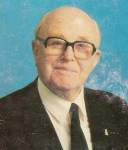
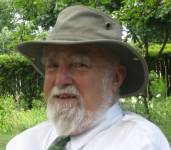 1993—Cyril Batham, ‘Freemasonry in England and France’:
1993—Cyril Batham, ‘Freemasonry in England and France’:
Hamill was a hard act to follow and Batham, although a top Masonic
scholar, lacked charisma in presentation; add to this some serious defects in
the book, and sales were not good. Again, we learned.
1995—Neville Barker Cryer, ‘A Masonic Panorama’:
A popular speaker, heartily welcomed back to our shores; the book was a
trifle slender, but well produced, and sold well. Many years later, ANZMRC was
happy to provide the edited text to Lewis Masonic for a revised edition to be
published in the UK as ‘Did you know this, too?’, a sequel to his ‘I just
didn’t know that’.
1997—Wallace McLeod, ‘The Quest for Light’:
This brilliant scholar and speaker from Canada consolidated ANZMRC’s
growing reputation. Recently, Anchor Communications (Virginia, USA) has
published a revised edition of this book.
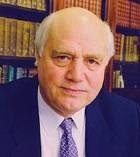 2000—Yasha Beresiner, ‘Masonic Curiosities’:
2000—Yasha Beresiner, ‘Masonic Curiosities’:
Another star in the firmament of Masonic research, Yasha is a gifted and
professional after-dinner speaker. He was not available for 1999, and the
Council experimented with the idea of combining the tour and the biennial
conference in 2000. Yasha attended, and contributed to the conference; the
conference, the tour and the book were all highly successful, but we experienced
administrative problems in combining events. The book cover was a delightful
montage of collectables mentioned in the text, and the numerous interior
illustrations were fine. We did a bigger than usual print run and Yasha placed a
bulk order, to sell the book from his shop in the UK.
2003—David Gray, ‘Inside Prince Hall’:
This young Prince Hall researcher from Ohio was originally scheduled to
tour in 2002, but there was a serious illness in the family, and the tour was
postponed to 2003, thus bringing us back into the tried and true sequence of
tour and conference in alternate years. The first half of his tour, through New
Zealand and the east coast of Australia, was highly successful, but the tour was
abandoned when one of his children was injured in a road accident and he flew
home. Prior to the tour, arrangements were made with Anchor Communications for a
North American edition to be published at the same time as the ANZMRC book. A
few months later, friends and fans were stunned to learn that David Gray had
been arrested on dishonesty charges and subsequently jailed for nine years.
I’m not sure what lessons we learned from this tour.
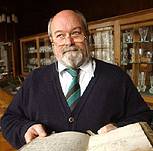
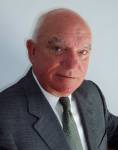 2005—Robert Cooper, ‘Freemasons, Templars & Gardeners’:
2005—Robert Cooper, ‘Freemasons, Templars & Gardeners’:
Bob Cooper, hailing from Edinburgh, did not require an interpreter for
the tour, which included South Africa and India, and was followed by a
self-organized mini-tour in North America. He charmed audiences wherever he
went, and the book was brilliant, except for a problem with the interior
illustrations.
2007—James Daniel, Masonic
Networks & Connections:
Indications are that the book and tour will maintain the high standard
established by the Council. An English edition of the book is being arranged.
Fellows of ANZMRC
On the tenth anniversary of the formation of the Council it was decided
to recognize substantial, long-term contributions to the success of ANZMRC by
awarding a Fellowship, to a maximum of three recipients per biennial conference.
To date, eight persons have been so honored:
2002—Murray Yaxley (long-term chairman of the fraternal relations
advisory committee of the seven Grand Lodges of Australasia, and three times
President of ANZMRC); Kent Henderson (Secretary of the Council from its
inception, responsible for organizing lecture tours, conferences, publications
and everything else); and Tony Pope (editor of the Council’s publications).
2004—Graham Stead (long-time Treasurer and one-term President of the
Council); Andy Walker (long-time behind the scenes worker and unglamorous
office-holder); and Max Webberley (philosopher, guide and quiet achiever).
2006—Colin Heyward (Assistant Secretary, New Zealand representative and
recruiter); and Richard Num (long-time Webmaster, one-term President, and
enthusiastic overseas recruiter).
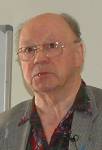
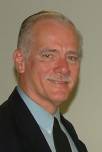
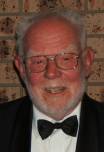

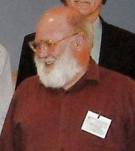
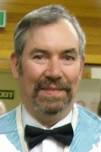
Live issues and future prospects
The creation of the Council called for vision and forward thinking, and
these requirements were provided in good measure by Kent Henderson and his
carefully selected supporters. The original goals have been met, and a workable
system is in place. But experience suggests that organizations, like people,
must continue to grow or face stagnation and eventually deterioration. The good
news is that there are still live issues and challenges ahead.
The first of these is to provide replacements of long-term key personnel.
The offices of president and treasurer are obviously important, but competent
replacements can usually be found. The key office is that of secretary, more so
in the Council than in most other organizations, because he arranges the lecture
tours, the conferences, the Kellerman Lectures, and the printing and
distribution of the various publications, in addition to routine secretarial
duties. It calls for a wide range of contacts and skills, and almost limitless
time and energy. This has been recognized by the Council in its appointment of
an assistant secretary. To a lesser extent a similar need arises with regard to
the editor of ANZMRC publications, and the appointment of an assistant editor
would provide a transitional period.
With the increase of Kellerman Lectures from six to seven in 1998, and to
eight in 2008, the duration of a biennial conference may have to be extended.
The practice has been to commence on a Friday evening and conclude on a Sunday
afternoon. It may be necessary to select a weekend when the following Monday is
a public holiday in all or most of the jurisdictions represented. This would
also permit the introduction of a workshop or general discussion period. At
present the opportunities for networking and informal discussion are limited to
late evenings and times before and after the conference.
There is also a question of who may attend a conference. Traditionally,
attendees are either members of the Affiliates and Associates, or members of the
host jurisdiction. Most sessions are not tyled, and on some occasions non-Masons
and members of unrecognized jurisdictions have attended such sessions, but this
has not met with approval from some delegates. The issue needs to be resolved.
Over the past seven years the wish has been expressed to try using local
lecturers for some of the tours, for example to have an Australian tour New
Zealand and a New Zealander tour Australia. The wish may be granted in 2009, as
British and American prospects have declined.
Two related projects initiated in New Zealand have great potential. The
first is to compile a catalog, online and on CD or DVD, of all research papers
published in Australia and New Zealand by ANZMRC and its affiliates and
associates. This is in the hands of the originator, Ed Robinson, and Assistant
Secretary Colin Heyward, but will require the active cooperation of the research
lodges. The catalog will be searchable by title, author, publisher, date, topic
and keywords, which will inform the searcher of the identity and whereabouts of
the paper. He will then be able to contact the source for a copy. The second
project arises from the first, and that is to make copies of the papers
available online via the Greenstone Library software, either as read-only files
or downloadable (whether free or on payment of a fee). The library papers will
be limited to those which the lodges and ANZMRC are prepared to supply for this
purpose. A spin-off from these projects is the option of placing the
transactions of one or more research lodge/s on CD for sale by the lodges. Legal
and financial aspects, as well as approval and assistance by authors and
publishers, still have to be resolved, but the projects have been started.
Just before the turn of the century, when Yasha Beresiner was Master of
Quatuor Coronati Lodge in England and Paul Bessel was Master of the Civil War
Lodge of Research in Virginia, the two lodges exchanged visits. Paul Bessel was
well aware of the activities of ANZMRC and attempted to initiate formation of a
similar organization of American lodges of research, but sheer numbers, and the
reluctance of American Grand Lodges to form inter-jurisdictional associations
other than at Grand Master level, doomed the attempt to failure. Perhaps an
attempt on a regional basis, as has been tried in this jurisdiction [Washington
state] with Canadian and Oregon research lodges, might be more successful,
provided the groundwork is carefully prepared.
ANZMRC has two associate members in Africa, one in Johannesburg and one
in Nairobi. There are a number of research lodges in South Africa, in four
jurisdictions, and these might well benefit from an organization similar to
ANZMRC, and if successful could look to expand as far north as Kenya, where
there are several Lodges of Instruction that engage in research and are always
looking for visiting speakers. It is possible that an African Masonic Research
Council and ANZMRC might eventually exchange touring lecturers. There are
numerous research lodges in India and Southeast Asia, and ANZMRC has associates
in both areas. Here is another region for potential cloning. Who knows, one day
there might be a World Association of Regional Masonic Research Councils. If so,
the headquarters would probably be in the northern hemisphere, in Europe or here
in North America.
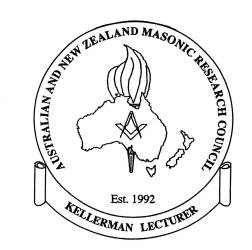 Conclusion
Conclusion
ANZMRC is not yet so old that it has begun to fossilize. It has achieved
much in 15 years, with the establishment of conferences, Kellerman Lectures,
lecture tours, and various publications. It has learned by trial and error, and
still has much to learn. It has almost reached its limit of expansion of
membership in Australia and New Zealand, but still has problems to solve,
arising from the fact that it covers seven Masonic jurisdictions and two
politico-legal systems, and still has room for improvement and expansion of
services.
Apart from refining the operation of current activities, the Council is
willing to expand its interests within its own geographical region, and is
prepared to provide assistance elsewhere upon request. The future of ANZMRC
looks bright.
Endnotes:
[1] For more information, see volume two of Henderson & Pope’s
‘Freemasonry Universal’, Global Masonic Publications, 2000.
[2] Incomplete and somewhat outdated, but still useful on the subject, is
‘Australasian lodges of research: an historical overview’ in ‘Masonic
Challenges’, the 1991 transactions of the Victorian Lodge of Research,
Melbourne 1992, and reprinted in volume one of ‘Masonic Research in South
Australia’ (1994), which is included in the ‘Downunder Research’ CD,
copies of which are in the Walter F Meier Lodge library and the Grand Lodge
library at Tacoma.
[3] See previous footnote.
[4] The complete collection of Kellerman Lectures from 1992 to 2004 will
be available on CD some time in 2008. Meanwhile, a selection is included in the
‘Downunder Research’ CD.
[5] The first 40 issues of the newsletter, ‘Harashim’, are included
in the ‘Downunder Research’ CD.
|
![]() News Feed |
News Feed |  Subscribe News by Email
Subscribe News by Email